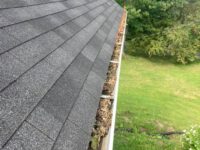Pest Control Services
Pest Control is an essential step in maintaining a healthy, sustainable environment. Pest scouting is a critical part of pest control, and it involves regular searching for and identifying pests and assessing the damage caused by problems. Predators are the most common type of pests, but there are also many other problems that you may have to deal with. Pests can be divided into two types: cyclical and sporadic. Continuous pests are generally present, while sporadic or intermittent pests only require control in rare circumstances. Potential problems may require control only under certain conditions, however.
Different pest control companies provide different service schedules, and some offer recurring visits or a free re-treatment if you are not satisfied with the results. Make sure that you know the details of your contract before hiring a pest control service, and ask your pest control technician to answer any questions that you may have. The technician will explain to you how the pest control treatment will work and what steps you need to take next. If you’re dealing with termites, you can wait until they’ve completed their initial treatment to ensure that you have an informed decision. However, if they’ve already destroyed your wood, they may need a follow-up treatment, and you’ll need to know when to vacuum them.
A good pest control service can provide a wide variety of services, and can address a wide range of issues. From rodents to cockroaches, to ants, flies, aphids, and a wide variety of other insects, pest control is an important process to protect your property and your health. Whether you’re looking for an outdoor pest control service or a residential pest control company, they can provide the right solutions to your problem.
Orkin is another great choice for pest control services. Their technicians use the latest technology and processes to solve your pest infestation problems. You can even tailor the service to your specific needs, as Orkin does. They will inspect your home and eliminate pests that aren’t harmful, remove their nests, and fortify cracks and high-risk areas. In addition, they’ll also provide you with a written report after the service to ensure you’re satisfied.
If you’re not familiar with a particular pest, research its needs and habits. This will help you determine whether or not you need to take action to control it. Then, you’ll know whether or not to take further measures in order to prevent pests from returning. If you do decide to take action, the best way to go about it is to learn as much as you can about the species and their habits. By learning about the specific species, you’ll be in control of the situation and will be able to make informed decisions.
Rodents are another common pest. They live in large colonies and eat everything in sight, from fruit to seeds. While most species of these creatures are omnivorous, some are scavengers, and can cause health problems such as asthma and respiratory infections. Termites also gnaw on property and may be a leading cause of fires. Additionally, termites and mice cost our nation about $1.5 billion per year. That’s more than all natural disasters combined.
Proper use of pesticides is essential for the safest results. Using pesticides safely is vital to the health of your family, so only a licensed professional should use them. Make sure you follow the manufacturer’s instructions and apply them only to the affected areas. Avoid using foggers or a pesticide if you don’t know how to read labels properly. You can also choose to use a safer chemical, like insecticidal soap, to kill pests.
Biological control refers to the use of natural enemies to keep pests under control. Insects and plant pathogens are natural enemies that feed on the larvae of certain pests. These natural enemies are not eradicators, but can be effective for a variety of pest problems. By controlling their population, these natural controls can eliminate the threat to the plant or animal. Physical and biological pest control are also used to protect the environment. For instance, electrical lights, pheromones, and plastic sheets can attract pests, but these methods are not 100% effective.
Among the various methods of pest control, pesticides are the most common. They can be applied to plants and animals to kill or inhibit their growth. Pesticides are classified based on their purpose: to control insects, fungi, bacteria, and plants. For instance, insecticides are used to control fungi, whereas herbicides and avicides are used to control birds. However, there are also chemosterilants, which interfere with normal reproduction and development in pests.






